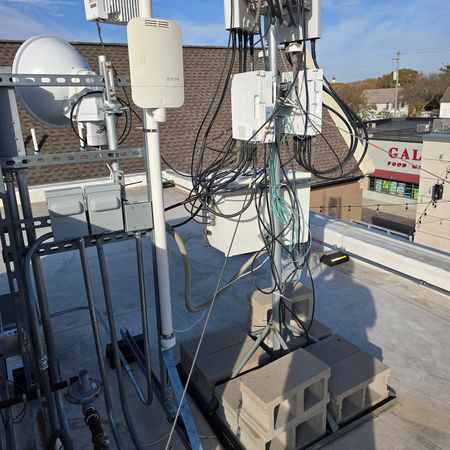
WPSC Wifi Network Expansion
Walnut Way Conservation Corp is spearheading an ambitious initiative to establish a community-driven Wireless Internet Service Provider (WISP) in Milwaukee's Lindsay Heights neighborhood. The project aims to bridge the digital divide by providing free public Wi-Fi access throughout targeted areas, with affordable options for residents to boost in-home signal strength.
Public Wi-Fi Infrastructure
The project will deploy a high-speed wireless network using 60GHz technology, establishing Wi-Fi access points in strategic locations throughout the community. This infrastructure will provide a base level of free internet access to all residents within range, targeting a speed of 100/20 Mbps for the free tier.
In-Home Signal Boosting
Residents will have the option to purchase Wi-Fi (WISP Routers) with VPN functionality and extenders, with baseline pricing starting from $20-$30. These devices will allow residents to amplify the free public Wi-Fi signal within their homes, improving connectivity and creating a more robust network experience.
Initial User Base and Scalability
The project targets an initial 3,500 subscribers, including:
1,750 individual homes with in-home booster devices
1,750 users in Multi-Dwelling Units (MDUs)
The network is designed to scale up to 17,000 users and beyond when complete, with plans to expand from Milwaukee's Near Northside to the Northwest side.
Digital Navigator Program
A crucial component of the project is the hiring and training of community members as Digital Navigators. These individuals will provide:
Support for device setup
Troubleshooting (routers / VPN)
Digital literacy training
This ensures that residents can fully utilize the new digital resources and maximizes the impact of the network deployment.
Community Engagement
The project emphasizes strong community involvement through:
Awareness campaigns
Demonstration events
Direct assistance for device setup and optimization
Implementation Strategy
Phase 1: Infrastructure Deployment
Install core network components and public Wi-Fi access points
Establish partnerships with local businesses and institutions to host access points
Conduct thorough testing to ensure targeted area coverage for initial launch
Phase 2: Device Distribution and Education
Procure a variety of Wi-Fi extenders and signal boosting devices
Develop educational materials explaining device options and benefits
Train Digital Navigators on device features and installation procedures
Phase 3: Community Outreach and Adoption
Launch awareness campaigns about the free Wi-Fi service
Host community events to demonstrate signal boosting devices
Provide direct assistance for device setup and optimization
Benefits
Ensures basic internet access is available to all residents at no cost
Allows low-income families to improve their connectivity affordably
Promotes digital literacy and technology adoption within the community
Supports local economic development by enabling home-based businesses and remote work
Sustainability
The free Wi-Fi service is maintained through public funding and partnerships
Revenue from device and any subscription sales contributes to ongoing maintenance and upgrades
Community involvement ensures long-term adoption and support
Power in Numbers
200
Programs
1700
Locations
8
Volunteers
Project Gallery











